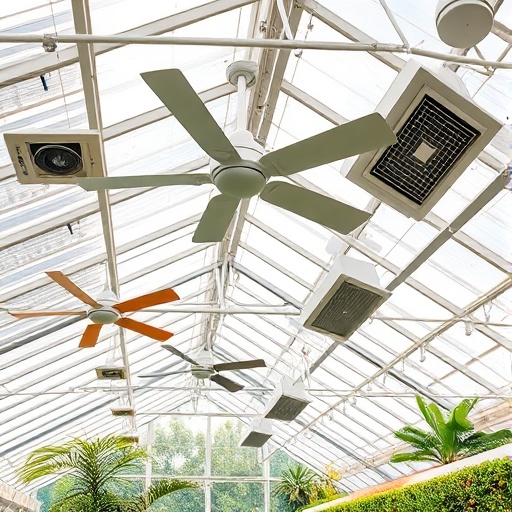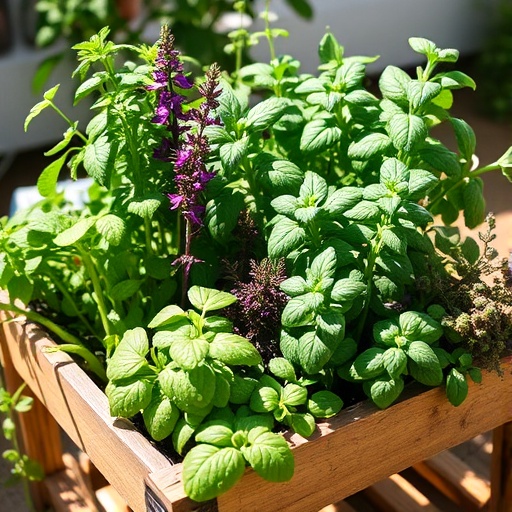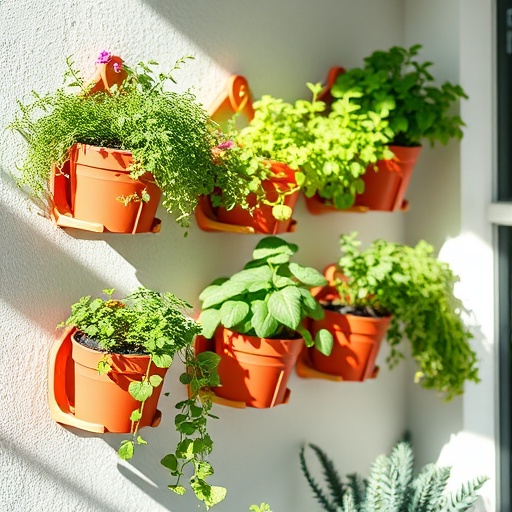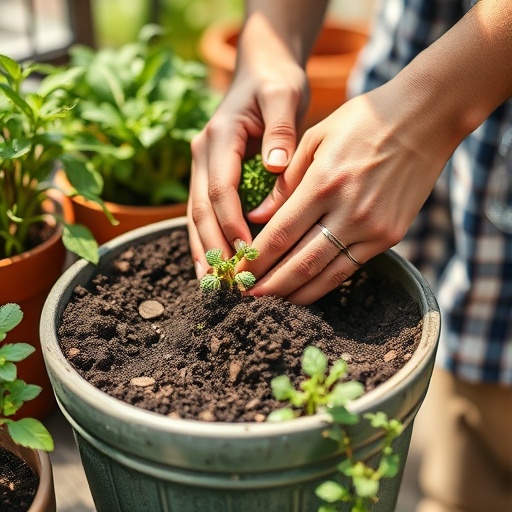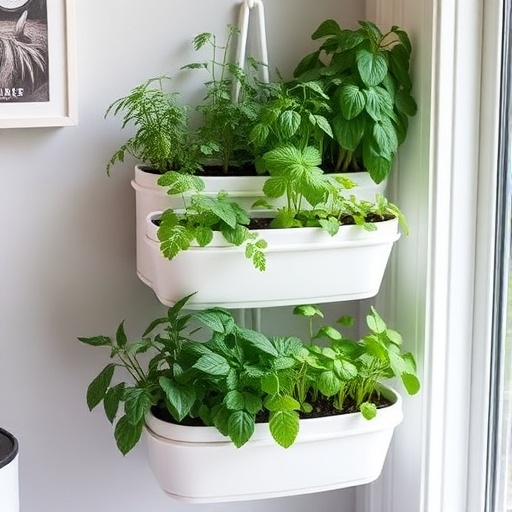Introduction
Did you know that suboptimal ventilation can reduce greenhouse yields by up to 30%? It's a staggering figure that highlights how crucial proper airflow is, yet many gardeners overlook this fundamental aspect when planning their greenhouse gardening layout ideas. While we meticulously choose seeds, soil, and even the perfect spot for our greenhouse, the internal atmosphere—especially airflow—often gets an afterthought. A well-ventilated greenhouse isn't just about keeping things cool; it’s about creating an optimal microclimate that promotes robust growth, deters pests, and prevents diseases. This guide will walk you through smart ventilation strategies, ensuring your greenhouse doesn't just survive, but thrives.
Tools & Materials Needed
Effective greenhouse ventilation doesn't always require complex, expensive machinery. Often, simple yet strategically placed tools and materials can make a world of difference. Here’s what you might need:
- Thermometer/Hygrometer: Essential for monitoring both temperature and humidity levels. Look for digital versions with minimum/maximum memory functions to track extremes.
- Manual/Automatic Vents: Roof vents and side vents are key. Manual vents are budget-friendly, requiring you to open and close them yourself. Automatic vents (solar-powered or wax-cylinder-driven) open and close based on temperature, offering convenience and consistent climate control.
- Circulation Fans: Small oscillating fans help move air internally, preventing stagnant pockets and equalizing temperature and humidity. Eco-friendly option: Use solar-powered fans if available.
- Shade Cloth: Blocks excessive solar radiation, reducing the need for heavy ventilation on sweltering days.
- Greenhouse Film Repair Tape: For sealing any unintended gaps or tears that could compromise your ventilation strategy.
- Insect Netting: Crucial for screened vents to prevent pests from entering while still allowing airflow.
- Watering Can/Hose with Sprayer: For occasional misting, which can help cool down the greenhouse during extreme heat.
For those on a budget or looking for eco-friendly alternatives, consider repurposing old window screens for vent covers, or even creating DIY passive vents from recycled materials. A simple hand-held fan can supplement occasional airflow during hotter periods if you can't install larger circulation fans immediately.
Time & Effort Overview
Implementing smart ventilation systems is a one-time effort for installation, followed by minimal ongoing management. Installing automatic vents might take an afternoon (approximately 3-4 hours) for a beginner, while setting up circulation fans is a quick 1-2 hour job. Monitoring and adjusting manual vents and shade cloths will become part of your daily routine, taking only a few minutes each day. This initial investment in time is significantly less than the time you'd spend battling disease or stunted growth in a poorly ventilated greenhouse. Compared to the continuous, demanding effort of nursing ailing plants, dedicating time to proper ventilation is a beginner-friendly, high-return investment.
Step-by-Step Gardening Process
Ensuring proper ventilation in your greenhouse is a continuous, integrated process, not a one-time fix. Here's a guided approach to optimize airflow, which directly impacts your greenhouse gardening layout ideas.
Step 1: Assess Your Greenhouse Layout and Orientation
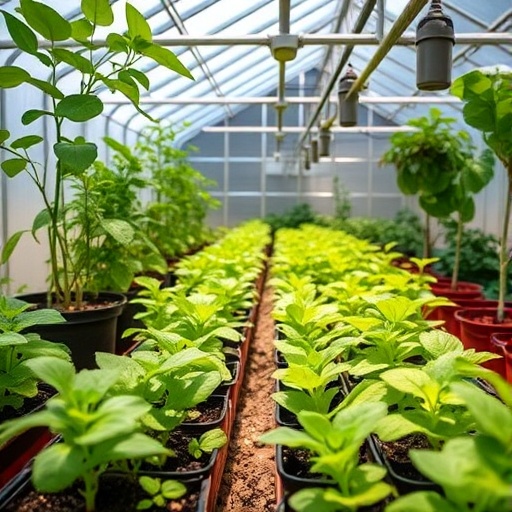
Before adding or adjusting anything, take stock of your existing setup. Note where the sun hits strongest, where prevailing winds come from, and where plants are currently placed. A south-facing greenhouse will experience more intense solar gain, requiring more robust ventilation. Consider your existing greenhouse gardening layout ideas and how plants might block airflow. This initial assessment guides all subsequent decisions.
Step 2: Install Passive Ventilation – Roof and Side Vents
Passive ventilation relies on the natural movement of hot air rising and cool air entering. This is the cornerstone of any good greenhouse ventilation plan.
- Roof Vents: Hot air naturally rises. Install roof vents at the highest point of your greenhouse. For every 100 square feet of greenhouse space, aim for at least 10 square feet of vent opening. Automatic temperature-activated vents are highly recommended here, as they open themselves when the temperature reaches a set point, even when you're not around.
- Side Vents/Louvers: These should be placed low on the sides, ideally opposite the roof vents to create a "chimney effect." Cool air enters through these lower vents, pushing warm air out through the roof. Ensure they are screened to prevent pests. Don't worry if your greenhouse wasn't designed with many vents; adding basic Louvre windows or even strategically placed mesh panels can significantly improve air exchange.
Step 3: Implement Active Ventilation with Circulation Fans
While passive vents manage bulk air exchange, circulation fans ensure even air distribution internally, preventing stagnant air pockets that foster fungal diseases like powdery mildew (which can affect up to 40% of greenhouse plants under poor ventilation).
- Oscillating Fans: Position these to gently move air throughout the plant canopy. Think of it as creating a constant, gentle breeze. One small oscillating fan for every 100-200 square feet is often sufficient.
- Exhaust Fans: If high temperatures are a constant battle, an exhaust fan paired with intake vents can rapidly expel hot air. These are typically thermostatically controlled to kick in when temperatures exceed your desired threshold. Position the exhaust fan at the top, opposite the intake vents, to maximize efficiency.
Step 4: Utilize Shade Cloth to Manage Heat Load
Before air even needs venting, you can reduce the heat load. Shade cloth is an invaluable tool, especially during summer months.
- Installation: Drape shade cloth over the exterior of your greenhouse roof and/or sides during the hottest parts of the year. Shades can reduce internal temperatures by 10-15°F (5-8°C).
- Density: Choose a shade cloth with a density appropriate for your climate and plants. 30-50% shade is common for most vegetables and flowers, while heat-sensitive plants might benefit from 60-70%.
Step 5: Regular Monitoring and Adjustment
Ventilation isn't "set it and forget it." Regularly check your thermometer and hygrometer.
- Daily Checks: Adjust manual vents based on external temperature and humidity. On sunny days, vents might need to be open more. On cooler, humid days, less open to retain warmth but still allow some air exchange.
- Seasonal Adjustments: As seasons change, your ventilation needs will shift. Less ventilation is needed in winter, more in summer.
Step 6: Strategic Plant Placement for Airflow
Revisit your greenhouse gardening layout ideas with ventilation in mind.
- Spacing: Avoid overcrowding plants. Adequate spacing allows air to circulate freely around individual plants, reducing humidity around foliage and preventing disease spread.
- Verticality: Utilize vertical space wisely, but ensure taller plants don't completely block airflow to shorter ones. Consider trellises or suspended planters.
Growth & Care Tips
Optimizing ventilation is a year-round commitment. Here’s how to continually nurture your plants for robust growth:
- Watering Frequency: In a well-ventilated greenhouse, plants may dry out slightly faster due to improved air circulation and lower humidity around the foliage. Always check soil moisture before watering. Overwatering is a common culprit for root rot, accounting for roughly 60% of houseplant fatalities, and this susceptibility is amplified in humid, poorly ventilated environments.
- Sunlight Exposure: While ventilation manages heat, ensure plants still receive adequate light. Shade cloth should be removed on cloudy days or during cooler seasons to maximize available sunlight. Most fruiting plants like tomatoes and peppers require 6-8 hours of direct sunlight.
- Pruning: Regular pruning, especially of lower leaves and suckers, improves internal plant airflow and reduces hiding spots for pests. This is particularly important for dense plants.
- Fertilization: Good ventilation indirectly aids nutrient uptake by promoting healthy root systems. Fertilize according to plant-specific needs, typically every 2-4 weeks during active growth, using a balanced slow-release fertilizer or a liquid feed.
- Pest Prevention: Excellent ventilation is your first line of defense. Many pests thrive in stagnant, humid conditions. Consistent airflow deters fungal gnats, spider mites, and aphids. Consider introducing beneficial insects like ladybugs as a natural pest control measure.
Eco-Friendly & Sustainable Alternatives
Gardening responsibly extends beyond just planting. Here are sustainable approaches for your greenhouse:
- Rainwater Harvesting: Collect rainwater from your greenhouse roof. This soft water is excellent for plants and reduces your reliance on municipal water.
- Composting: Start a compost bin for plant scraps. Your homemade compost makes a nutrient-rich, free soil amendment.
- Natural Pest Controls: Instead of chemical pesticides, use neem oil, insecticidal soap, or introduce beneficial insects.
- Recycled Materials: Repurpose old plastic bottles into self-watering systems or use reclaimed wood for shelving and raised beds.
- Solar Power: Consider small solar panels to power your circulation fans or automatic vent openers, significantly reducing your energy footprint.
- Water Conservation: Implement drip irrigation or soaker hoses to deliver water directly to the roots, minimizing evaporation and waste.
- Space-Saving for Small Gardens: If your greenhouse gardening layout ideas are constrained by space, explore vertical gardening systems or tiered shelving units. These maximize plant density without sacrificing airflow by utilizing vertical space. You can easily find inspiring examples on websites like Pinterest, where users share thousands of creative solutions for compact green spaces: https://www.pinterest.com/janatjanay47/.
Creative Ideas & Uses
Beyond functionality, your greenhouse can be a beautiful, inspiring space.
- Aesthetic Integration: Design your greenhouse to complement your landscape. Use natural wood tones or paint it an appealing color. Integrate climbing plants on the exterior for a softened look.
- Relaxation Nook: If space allows, include a small chair or bench within your greenhouse. It's a wonderful place to relax, read, and enjoy the warmth, especially during cooler months.
- Herb Showcase: Dedicate a section to a vibrant herb garden. The diverse textures and scents can be incredibly appealing. Your greenhouse gardening layout ideas can easily include designated zones for different plant types.
- Repurposed Decor: Use antique watering cans, old wooden crates, or vintage terracotta pots as decorative elements. These add character and a personal touch.
- Mini Ecosystems: Create a small terrarium or paludarium inside for a miniature, self-sustaining environment.
- Propagation Station: Utilize shelves for propagating cuttings or starting seeds. This keeps the early stages of growth organized and easily monitored, making for a very practical and aesthetically pleasing setup.
Common Mistakes to Avoid
Even experienced gardeners make errors. Being aware of these common pitfalls can save you time and plants.
- Overcrowding Plants: This is perhaps the most common mistake, directly hindering airflow and fostering disease. It’s tempting to squeeze in "just one more," but ample spacing (e.g., 6-12 inches between small plants, more for larger ones) is critical. Studies show overcrowded conditions can increase fungal disease incidence by 20-30%.
- Neglecting Humidity Monitoring: High humidity (above 70%) combined with poor airflow is a breeding ground for fungi. Investing in a hygrometer is crucial. Aim for 50-70% humidity for most greenhouse plants.
- Ignoring Prevailing Winds: Your greenhouse's orientation relative to winds plays a significant role in both heat loss and natural ventilation. Position vents to utilize or protect from dominant winds.
- Insufficient Venting Area: Many pre-fabricated greenhouses have inadequate venting. As mentioned, aim for at least 10% of your floor area as vent opening, distributed between high and low points.
- Relying Solely on Passive Ventilation: While excellent, passive vents might not be enough during peak heat. Active circulation fans are often necessary to prevent hot spots.
- Forgetting Bug Screens: Open vents are invitations for pests. Always install fine mesh screens to keep out unwanted visitors while letting air flow.
- Lack of Regular Cleaning: Dust and debris on vent screens or fan blades can reduce efficiency. A quick clean every few months can maintain optimal performance.
Maintenance & Storage Tips
Maintaining your ventilation system ensures its longevity and effectiveness, contributing to healthy plants and smart greenhouse gardening layout ideas.
- Seasonal Deep Clean: At least once a year, preferably in late autumn or early spring, clean your greenhouse thoroughly. This includes washing down panels, clearing gutters, and inspecting all vents and fans.
- Vent Inspections: Check automatic vent openers for proper function (wax cylinders can degrade over time). Lubricate hinges on manual vents if they become stiff.
- Fan Maintenance: Clean fan blades regularly to remove dust and debris that can reduce efficiency and cause motor strain. Check electrical connections for active fans for corrosion.
- Shade Cloth Storage: When not in use, clean and dry your shade cloth before storing it in a cool, dry place to prevent mildew and extend its lifespan.
- Seal Leaks: Inspect your greenhouse for any cracks or gaps in the panels or seals. Even small leaks can compromise temperature and humidity control, making ventilation less effective. Use specialized greenhouse repair tape for quick fixes.
- Soil Drainage: Ensure your plant pots have excellent drainage. Poor drainage can create localized humidity problems and foster root diseases, even in a well-ventilated greenhouse. Consider elevating pots slightly for better airflow around their bases.
Conclusion
Optimizing ventilation is truly the unsung hero of successful greenhouse gardening layout ideas. It’s the invisible hand that nurtures robust growth, wards off diseases, and ensures your plants receive the consistent, ideal environment they crave. From strategic passive vents to the subtle hum of a circulation fan, every element works in concert to transform your greenhouse into a thriving ecosystem. By applying these smart ventilation tips, you’re not just growing plants; you’re cultivating a vibrant, resilient garden that will reward you with bountiful harvests and endless joy. So, take the leap, implement these strategies, and watch your greenhouse flourish! We'd love to see your progress – share your beautifully ventilated greenhouse photos with us on social media!
FAQ
Q1: How often should I open my greenhouse vents?
A1: Generally, vents should be opened whenever the temperature inside your greenhouse exceeds your desired maximum (e.g., 75-80°F or 24-27°C). On warm, sunny days, this might mean opening them fully for most of the day. On cooler days, just a crack might suffice to prevent stagnant air. Automatic vents simplify this process significantly.
Q2: Can I just use a fan instead of vents for a basic greenhouse gardening layout?
A2: While fans are excellent for internal air circulation and supplementing airflow, they are not a substitute for proper vents. Vents facilitate the exchange of stale internal air with fresh external air, which fans alone cannot achieve effectively. You need both for optimal greenhouse health.
Q3: What's the ideal humidity level for most greenhouse plants?
A3: Most greenhouse plants thrive in a relative humidity range of 50-70%. Too high (above 80%) can encourage fungal diseases, while too low (below 40%) can stress plants, particularly seedlings and young plants. Your hygrometer will be your best friend here.
Q4: My greenhouse gets too hot even with all vents open. What else can I do?
A4: If extensive venting isn't enough, consider adding shade cloth to the exterior of your greenhouse. This can reduce internal temperatures by 10-15°F (5-8°C) by blocking solar radiation. You might also need more powerful exhaust fans if the problem persists, especially if you have a larger greenhouse gardening layout idea.
Q5: How do I prevent pests from entering through vents?
A5: Always install fine mesh insect netting over all vent openings. This allows air to pass freely while blocking most common greenhouse pests like aphids, whiteflies, and spider mites. Regular checks for tears are essential.
Q6: Should I ventilate in winter?
A6: Yes, but carefully. Even in winter, stagnant air can lead to condensation and fungal issues. On milder winter days, briefly open vents for 15-30 minutes around midday to exchange air, especially if you're heating your greenhouse. This reduces humidity without significant heat loss.
Q7: Will good ventilation help with plant diseases?
A7: Absolutely! Proper airflow prevents the moist, still conditions that many fungal and bacterial diseases, such as powdery mildew, botrytis, and damping-off, thrive in. By minimizing leaf wetness and promoting strong air movement, you significantly reduce the risk of disease spread, making it a cornerstone of healthy greenhouse gardening layout ideas.
Looking for more ways to enhance your gardening skills? Check out these related articles for further inspiration and practical tips:
- For small spaces, learn how to start a thriving herb garden with our guide on How to Start a Balcony Herb Garden in Small Spaces.
- Discover beautiful ways to combine plants and colors in your landscape with Layered Flower Bed Design Tips.
- If you're just starting out, find easy-to-grow blooms with our selection of Easy Flowers to Grow for Beginners.
- For those cultivating a vibrant pollinator-friendly space, dive into How to Attract Butterflies and Bees with Flowers.
